15 Ng. 100 Đ. Nguyễn Xiển, Thanh Xuân Nam, Thanh Xuân, Hà Nội 100000
Where the mighty Mekong River, a lifeline for Southeast Asia, widens to an astonishing 14-kilometer expanse before cascading over thunderous waterfalls, lies a truly unique geographical and cultural wonder: Si Phan Don, or "The 4,000 Islands." This mesmerizing archipelago in the far south of Laos offers an idyllic escape, a place where time slows down, and the rhythm of rural life dictates the day.
For travelers seeking an authentic immersion into Lao culture, unparalleled natural beauty, and a serene retreat from the bustling world, Si Phan Don is an unmissable destination. It's not just a collection of islands; it's an intricate tapestry of interconnected communities, ancient traditions, and breathtaking landscapes that promise an unforgettable journey.
Si Phan Don, literally meaning "4,000 Islands" in Lao, is a geographical phenomenon created by the Mekong River's braided channels during the dry season, revealing countless islands, islets, and sandbars. While the exact number of islands fluctuates with the river's water levels, the name perfectly captures the vast and intricate nature of this watery wonderland.
Unlike coastal island destinations, Si Phan Don offers a unique freshwater island experience. Here, life revolves around the Mekong: fishing boats gently glide by, children play in the shallows, and lush rice paddies carpet the larger islands. The predominant vibe is one of profound tranquility and a laid-back charm that invites visitors to slow down, connect with nature, and savor the simple joys of life.
Whether you're cycling through sleepy villages, discovering ancient ruins, marveling at the region's colossal waterfalls, or searching for the elusive Irrawaddy dolphins, Si Phan Don promises a diverse range of experiences that will captivate your senses and rejuvenate your spirit.
The history of Si Phan Don is deeply intertwined with the Mekong River, which has shaped not only the landscape but also the lives and cultures of its inhabitants for millennia. This region has always been a strategic and vital pathway, linking various kingdoms and civilizations.
Archaeological evidence suggests human presence in the Mekong basin, including areas around Si Phan Don, dates back to prehistoric times. Early settlers were drawn to the river's abundant resources, fertile lands, and natural transportation routes. The islands would have provided natural protection and stable ground for early agricultural communities, who developed sophisticated methods of farming and fishing adapted to the river's seasonal ebbs and flows.
During the height of the Lan Xang Kingdom (14th to 18th centuries), one of the largest and most influential empires in Southeast Asian history, Si Phan Don held significant strategic importance. The Mekong was the primary highway for trade, communication, and military movements. Controlling key points along the river, like the 4,000 Islands, was crucial for exerting power and facilitating commerce throughout the kingdom and beyond. This era saw the further establishment of Theravada Buddhism, which profoundly shaped the social fabric and spiritual life of the island communities, with numerous temples being built that remain central to island life today.
Perhaps the most fascinating chapter in Si Phan Don's modern history is the period of French colonial rule in Indochina during the late 19th and early 20th centuries. French ambitions were largely focused on finding a navigable water route through the Mekong to reach China. However, the mighty Khone Phapheng Falls, south of Si Phan Don, proved an insurmountable barrier.
Undeterred, the French embarked on an extraordinary engineering feat: constructing a narrow-gauge railway across two of the larger islands, Don Det and Don Khon. This railway, completed in 1893, was designed to bypass the falls, allowing goods and even dismantled ships to be transported by land. While the railway ultimately failed to open up the desired trade route to China (due to the rapid development of railways elsewhere), its remnants – including old bridges, railway tracks, and even a rusty locomotive – stand as a poignant testament to colonial ingenuity and the challenging natural environment. This period also influenced infrastructure development and introduced new crops and administrative systems to the islands.
In the aftermath of the colonial era and through Laos's post-independence and civil war periods, Si Phan Don has largely maintained its unique charm and traditional way of life. While tourism has grown significantly in recent decades, particularly on Don Det, the larger islands like Don Khong have retained their serene, authentic character.
The islanders' livelihoods are still deeply rooted in agriculture (especially rice cultivation), fishing, and small-scale trade. Life here moves at a slower pace, governed by the natural rhythms of the river and the seasons. This commitment to preserving its authentic culture and relaxed atmosphere is what makes Si Phan Don so appealing to travelers seeking genuine experiences and a break from the fast-paced world. The people of Si Phan Don are renowned for their gentle nature, warm hospitality, and resilient spirit.
Si Phan Don encompasses thousands of islands, but a few stand out as popular destinations, each with its own distinct character.
Overview: As the largest island, Don Khong is often considered the administrative and cultural center of Si Phan Don. It offers a more authentic, tranquil, and less touristy experience compared to its southern neighbors.
Vibe: Quiet, laid-back, and culturally rich. Ideal for those seeking relaxation, cultural immersion, and a slower pace.
Attractions: Explore charming villages by bicycle, visit ancient Buddhist temples (like Wat Phou Khao Keo and Wat Chom Thong), stroll through bustling local markets, and witness stunning Mekong sunsets. It's a great base for exploring the region's natural wonders while returning to a peaceful retreat.
Accommodation: Predominantly guesthouses and a few small, locally run resorts, offering a more traditional stay.
Overview: Don Det is the most popular and developed island for tourists, particularly backpackers. It's known for its lively (but still relaxed) social scene and easy access to various activities.
Vibe: Energetic, social, and budget-friendly. Caters to a younger crowd and those looking for a bit more activity and interaction.
Attractions: Rent a bicycle and explore the island, go tubing or kayaking on the Mekong, relax in riverside bungalows, and enjoy a variety of restaurants and bars. It's connected to Don Khon by an old French bridge, making exploration of both islands easy.
Accommodation: Numerous guesthouses, bungalows, and budget-friendly options, many with river views and hammock-strung balconies.
Overview: Connected to Don Det by the old French bridge, Don Khon offers a blend of historical remnants and stunning natural beauty.
Vibe: More peaceful than Don Det, with a focus on nature and history.
Attractions: Home to the picturesque Li Phi Falls (Tad Somphamit), where you can swim in natural pools; explore the remnants of the French railway, including an old bridge and a rusty locomotive; and it's a primary departure point for boat trips to spot the endangered Irrawaddy dolphins.
Accommodation: Fewer options than Don Det, but still a good selection of guesthouses and bungalows.
While each island has its unique draw, the wider Si Phan Don region boasts attractions that are truly unforgettable.
Located just south of Don Khon, near the Cambodian border, Khone Phapheng Falls are the undisputed highlight of Si Phan Don and the largest waterfalls by volume in Southeast Asia. Often dubbed "the Niagara of the East," these falls are not known for their height but for their immense width and the sheer power of the Mekong as it tumbles over multiple tiers of rocks.
A well-maintained viewing platform provides breathtaking panoramic views, allowing you to appreciate the scale and force of this natural wonder. The thunderous roar of the water and the misty spray create an awe-inspiring spectacle. It's a humbling reminder of the Mekong's raw power.
One of the most thrilling and poignant experiences in Si Phan Don is the search for the critically endangered Irrawaddy dolphins (Pakha). These unique freshwater dolphins inhabit a deep pool of the Mekong River just below Khone Phapheng Falls, near the Lao-Cambodian border.
While sightings are not guaranteed due to their small numbers and shy nature, taking a boat trip specifically dedicated to finding them is an ethical and often rewarding endeavor. Local boat operators, particularly from Don Khon, specialize in these tours. Witnessing these gentle, distinct-looking creatures in their natural habitat is a truly special moment and highlights the urgent need for conservation efforts.
Renting a bicycle is the quintessential Si Phan Don experience. Most islands are relatively flat, making cycling an easy and enjoyable way to explore. Pedal along dusty paths that crisscross rice paddies, pass through friendly villages, and offer endless opportunities to observe local life unfold. This allows for spontaneous stops, interactions with locals, and a deep appreciation for the island's tranquil beauty.
The vast expanse of the Mekong River in Si Phan Don provides an incredible canvas for daily sunset spectacles. Find a riverside bar, guesthouse balcony, or simply a quiet spot along the western bank of any of the islands, and watch as the sun dips below the horizon, painting the sky in fiery hues of orange, pink, and purple. The reflections on the calm water create a truly magical and unforgettable scene.
On Don Det and especially Don Khon, history buffs can delve into the fascinating legacy of French colonialism. Explore the decaying remnants of the narrow-gauge railway built to bypass the falls. You can see sections of the old track, an impressive old bridge connecting Don Det and Don Khon, and even a rusty locomotive serving as a poignant reminder of this ambitious engineering project.
Beyond the main attractions, simply immersing yourself in the local way of life is a profound experience.
Village Walks: Wander through traditional villages, observe stilt houses, and witness daily activities like rice harvesting, fishing, and preparing meals.
Local Markets: Visit the morning markets, particularly on Don Khong, to experience a vibrant display of fresh produce, local delicacies, and handmade goods. It’s an excellent place to sample authentic Lao food and interact with friendly islanders.
Temple Visits: Each island has its share of serene Buddhist temples. Take time to explore their grounds, admire the architecture, and observe local devotees. Remember to dress respectfully.
A trip to Si Phan Don requires some practical planning to ensure a smooth and enjoyable experience.
From Pakse: Pakse, the main city in Southern Laos, is the primary gateway to Si Phan Don. It has an international airport (Pakse International Airport - PKZ) with connections to Vientiane, Luang Prabang, Bangkok, and Ho Chi Minh City. From Pakse, you can take a bus or minivan south to the ferry terminals.
To Don Khong: Take a bus/minivan to Hat Xai Khun, the mainland ferry terminal directly opposite Don Khong. A short ferry ride (or longtail boat) will take you to Muang Khong town on the island.
To Don Det/Don Khon: Take a bus/minivan to Nakasong (sometimes spelled Nakasang or Ban Nakasang), the mainland village that serves as the ferry point for Don Det and Don Khon. From Nakasong, longtail boats regularly depart for Don Det and Don Khon.
From Cambodia (via Stung Treng): If coming from Cambodia, you can take a bus/minivan to the Dom Kralor/Veun Kham border crossing. From the Lao side, you can arrange transportation to Nakasong for boats to Don Det/Don Khon, or a longer journey to Hat Xai Khun for Don Khong.
Organized Tours: The most convenient way to reach Si Phan Don and explore its highlights is by booking an organized tour. Golden Trail Travel offers comprehensive packages that include comfortable transportation from Pakse, island transfers, and guided excursions to the waterfalls and dolphin-spotting areas. Visit their website at https://goldentrailtravel.com/ to explore their Si Phan Don tour options.
The dry season (October to April) is generally the most favorable time to visit Si Phan Don.
November to February: Cooler temperatures, lower humidity, and less rainfall make for comfortable exploration. This is peak tourist season.
March to April: Temperatures rise significantly and can be very hot, especially in April.
Wet Season (May to October): The landscape is lush and green, and the Mekong is at its fullest. While there are fewer tourists, expect higher humidity and regular, often heavy, rain showers. Some roads or paths might become muddy.
Lightweight, Breathable Clothing: Cotton or linen is ideal for the tropical climate.
Sun Protection: A wide-brimmed hat, sunglasses, and high-SPF sunscreen are absolutely essential.
Insect Repellent: Crucial for evenings and early mornings, especially near the river.
Comfortable Walking Shoes/Sandals: For exploring villages, temples, and paths.
Swimsuit: If you plan to swim in designated areas like Li Phi Falls.
Basic First-Aid Kit: Include any personal medications, bandages, and antiseptic wipes.
Reusable Water Bottle: Stay hydrated and reduce plastic waste.
Camera: For capturing the stunning landscapes and cultural moments.
Cash (Lao Kip): While ATMs are available on Don Khong (Muang Khong) and Don Det, cash is king for most local purchases, guesthouses, and small eateries.
Dress Modestly: Especially when visiting temples or interacting with locals. Cover your shoulders and knees.
Remove Shoes: Before entering temples and people's homes.
Ask Permission: Before taking photos of locals, especially children.
Bargain Respectfully: When shopping in markets, a little polite bargaining is acceptable, but always with a smile.
Be Mindful of Monks: Women should avoid touching monks. Always show respect.
Support Local: Choose local guesthouses, restaurants, and tour operators to ensure your tourism dollars benefit the communities directly.
As Si Phan Don gains popularity, responsible tourism becomes paramount. Choosing to travel sustainably not only preserves this unique environment but also enhances your experience by fostering deeper connections with the local culture.
Reduce Plastic Waste: Minimize your use of single-use plastics. Refill your water bottle, decline plastic straws, and bring reusable bags for shopping.
Conserve Resources: Be mindful of your water and electricity consumption in guesthouses.
Respect Wildlife: When observing Irrawaddy dolphins, maintain a respectful distance and choose operators who prioritize the dolphins' welfare. Avoid any activities that involve touching or disturbing wildlife.
Learn Basic Lao Phrases: Even a few simple greetings like "Sabaidee" (hello) or "Kob Jai" (thank you) can go a long way in fostering positive interactions.
Eat Local: Savor the delicious Lao cuisine at local restaurants and street food stalls. This supports local businesses and offers an authentic taste of the region.
Buy Local Handicrafts: Purchase souvenirs directly from artisans or local markets. This ensures your money goes directly to the producers and helps preserve traditional crafts like weaving.
Engage with Locals: Be open to conversations and learn about their way of life. The people of Si Phan Don are generally very friendly and welcoming.
Look for opportunities to participate in community-based tourism initiatives, if available. These programs often provide direct economic benefits to local villages and offer unique cultural experiences, such as rice farming demonstrations or traditional cooking classes.
By choosing to travel responsibly, you contribute to the well-being of the communities and the preservation of Si Phan Don's pristine environment for future generations to enjoy.
To truly unlock the magic of Si Phan Don and ensure a stress-free, enriching, and unforgettable journey, partnering with Golden Trail Travel is your best decision. As experts in crafting exceptional travel experiences throughout Southeast Asia, they are perfectly poised to guide you through the wonders of Laos' 4,000 Islands.
Expertly Designed Itineraries: Golden Trail Travel offers a range of meticulously planned tours for Si Phan Don, catering to different interests and durations. Whether you want a quick two-day escape or a more leisurely exploration of multiple islands, they have options that balance activities with relaxation.
Seamless Logistics: Forget the complexities of bus schedules, ferry connections, and island transfers. Golden Trail Travel handles all the logistics, providing comfortable and reliable transportation from Pakse and between the islands. You can relax and fully immerse yourself in the experience.
Knowledgeable Local Guides: Many of their tours include experienced local guides who bring the history, culture, and natural beauty of Si Phan Don to life. Their insights provide a deeper understanding and appreciation of the region.
Authentic Cultural Experiences: Golden Trail Travel emphasizes authentic encounters, ensuring you get to connect with local communities, sample genuine Lao cuisine, and witness traditional ways of life.
Sustainable Practices: They are committed to responsible tourism, working with local partners and promoting practices that benefit the environment and local communities.
Easy and Secure Booking: Visit their user-friendly website at https://goldentrailtravel.com/ to browse their Si Phan Don tour packages, view detailed itineraries, and book your adventure with confidence. Their team is also available to help customize tours to your specific preferences.
Let Golden Trail Travel be your trusted partner in discovering the serene beauty, rich culture, and endless charm of Laos' 4,000 Islands. Prepare for an escape unlike any other.
Q1: What is Si Phan Don? A1: Si Phan Don, meaning "4,000 Islands" in Lao, is a beautiful archipelago in the Mekong River in southern Laos. It's a unique freshwater island complex formed by the river's wide channels, offering a tranquil and culturally rich experience.
Q2: Where is Si Phan Don located? A2: Si Phan Don is located in Champasak Province, in the far south of Laos, near the border with Cambodia. It's approximately 40-50 kilometers south of Pakse, the largest city in Southern Laos.
Q3: How many islands are there in Si Phan Don? A3: The name "4,000 Islands" is symbolic, referring to the countless islands, islets, and sandbars that emerge during the dry season when the Mekong River's water level is lower. The actual number fluctuates with the seasons.
Q4: What are the main islands to visit in Si Phan Don? A4: The three most popular islands for visitors are: * Don Khong: The largest and most authentic island, offering a quiet, cultural experience. * Don Det: The most popular backpacker island, known for its lively (but still relaxed) social scene. * Don Khon: Connected to Don Det, famous for Li Phi Falls and French colonial remnants, and a base for dolphin spotting.
Q5: How do I get to Si Phan Don? A5: Most travelers arrive via Pakse. From Pakse, you can take a bus or minivan to either Hat Xai Khun (for Don Khong) or Nakasong (for Don Det/Don Khon), followed by a short ferry or longtail boat ride to your chosen island. Organized tours by companies like Golden Trail Travel often provide seamless transportation.
Q6: What are the main attractions in Si Phan Don? A6: Key attractions include: * Khone Phapheng Falls: Southeast Asia's largest waterfall by volume. * Irrawaddy Dolphin Spotting: Near the Lao-Cambodian border. * Li Phi Falls (Tad Somphamit): Picturesque waterfalls with swimming spots on Don Khon. * French Colonial Remnants: Old railway tracks and bridges on Don Det/Don Khon. * Cycling: Exploring the islands' villages, rice fields, and temples by bicycle. * Mekong Sunsets: Enjoying stunning sunsets over the vast river.
Q7: What is the best time to visit Si Phan Don? A7: The dry season (October to April) is generally the best time, with cooler and more comfortable temperatures, especially from November to February. The wet season (May to October) makes the landscape very lush but brings higher humidity and frequent rain.
Q8: What kind of accommodation is available? A8: Accommodation ranges from basic guesthouses and bungalows (often with river views and hammocks) to a few small resorts. Options are more plentiful and budget-friendly on Don Det, while Don Khong offers a more traditional stay.
Q9: Can I swim in the Mekong River in Si Phan Don? A9: Yes, there are designated swimming spots, particularly around Li Phi Falls on Don Khon. However, always exercise caution, be aware of currents, and ensure the area is safe for swimming.
Q10: Is Si Phan Don suitable for families with children? A10: Yes, Don Khong, in particular, offers a very safe and relaxed environment for families. Children often enjoy cycling, swimming, and interacting with local kids. Don Det can be suitable too, though it has a slightly more active social scene.
"Our trip to Si Phan Don with Golden Trail Travel was the highlight of our Laos adventure! From the seamless transfers to the comfortable guesthouse on Don Khong, everything was perfectly organized. Our guide was fantastic, sharing so much about the local culture. The Khone Phapheng Falls are truly breathtaking!" — Sarah & John D., United Kingdom
"Golden Trail Travel made our 4,000 Islands experience truly magical. We loved cycling through the quiet villages on Don Khong and then heading to Don Khon to see the beautiful Li Phi Falls. The dolphin spotting trip, though short, was so exciting! Highly recommend their well-planned itineraries." — Kenji T., Japan
"If you're looking for an authentic and peaceful escape in Laos, Si Phan Don is it, and Golden Trail Travel is the way to go. Their attention to detail, knowledgeable local guides, and commitment to sustainable tourism really impressed us. We felt completely immersed in the island life." — Maria P., Germany
"We booked a multi-day tour to the 4,000 Islands with Golden Trail Travel, and it exceeded all our expectations. The logistics were flawless, allowing us to relax and enjoy the stunning scenery. Watching the sunset over the Mekong was unforgettable. They truly offer a premium and authentic experience." — Alex C. & Family, Canada
"Absolutely loved our Golden Trail Travel tour to Si Phan Don! The pace was perfect, giving us plenty of time to explore and unwind. The guide was excellent, providing fascinating insights into the history and culture. Booking was easy, and the communication was great. A definite must-do when in Laos!" — Lisa M., Australia
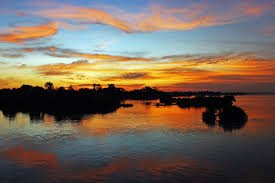
.jpg)
Bac Ninh cycling lets you experience the beautiful Vietnamese countryside in the northern Vietnam. Pedaling on the back roads, through rural village lanes while greeting local farmers and school kids as you pass by, all add to an immersive experience!
May 28, 2025
.jpg)
Electric bikes, or e-bikes use rechargeable batteries to assist cyclists with a small electric motor. E-bikes are particularly suitable for holidays, as they allow people who do not share the same level of fitness to enjoy cycling activities together. Cycling in Vietnam with our electric bicycles is a truly amazing experience — They help cyclists ride longer distances per day trip, and navigate routes with uphill sections more easily. This makes a wider range of destinations accessible to a wider range of cyclists, including senior cycling tourists. Wandering through rural villages, eating delicious food, and enjoying this country’s great landscape. From long-distance treks to shorter rides and sightseeing, there is a route for everyone!
May 28, 2025
.jpg)
We have a wide range of kids bikes for our bike tours in Hanoi Vietnam. Our small bicycles are used for both boys and girls. There is no difference between boy bikes and girl bikes. The bike frame is the same – Children’s bikes are sized by wheel rather than frame because it’s the wheels that determine the proportions of the rest of the bike. Make sure your child can operate the brake and gear levels comfortably, and that the pedals are positioned for safe stopping.
May 28, 2025
.jpg)
A single speed bicycles or a fixed gear bike is a type of bicycle with a single gear ratio. These bicycles are without derailleur gears, hub gearing or other methods for varying the gear ratio of the bicycle. There are many types of single speed bicycles such as single speed bikes for children, cruiser type bicycles, classic commuter bicycles, unicycles, bicycles designed for track racing, fixed-gear road bicycles, and single-speed mountain bikes.
May 28, 2025
.jpg)
Mountain bikes are designed to be ridden over rugged terrain and technical trails with logs, rocks, roots and other obstacles. They have a sharp frame geometry that puts the rider in a commanding position to pedal and climb efficiently. They have lower gear ratios that allow riders to pedal through steep and difficult terrain. Because of their intended use, mountain bikes are sturdy and overbuilt to handle the abuse of the trails. They usually have larger, heavily knobbed tires and strong brakes like hydraulic disc brakes. Many mountain bikes feature a kind of suspension shock over the front tire or both front and rear, allowing the frame to comply with the bumps, jumps and challenges of the trail.
May 28, 2025
.jpg)
Giant are the world’s leading brand for quality and safety in bikes. Giant Anyroad bicycles are designed with a lightweight yet durable ALUXX alloy frame featuring a taller headtube and increased toptube stand-over distance for confident handling.
May 28, 2025
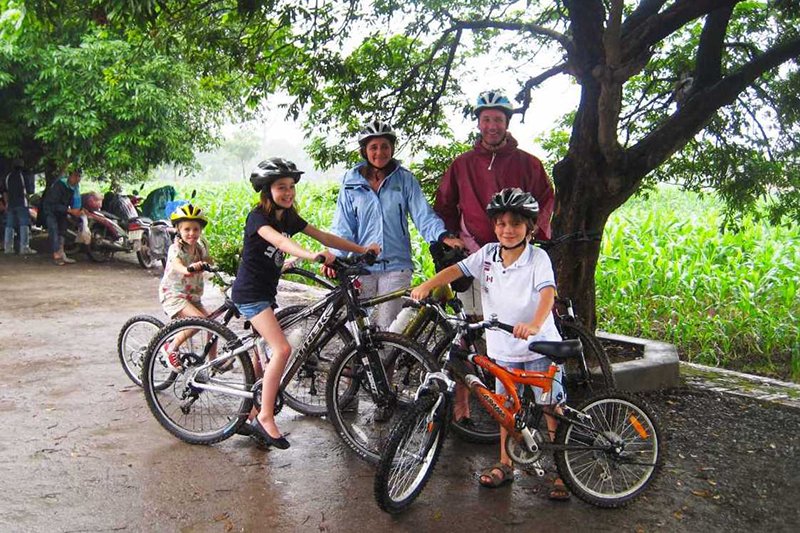
Hanoi Cycling lets you experience the beautiful countryside of the Vietnam’s capital, as well as rural Hanoi village life from up close. Pedaling on the back roads, through countryside lanes while greeting local farmers and school kids as you pass by, all add to an immersive experience!
May 28, 2025
.jpg)
Hybrid bicycles are a combination of a road bike and a mountain bike. Hybrid bikes feature relaxed frame geometry and raised handlebars, meaning that you sit up straigh
May 28, 2025
.jpg)
At the inaugural night tour of Cuc Phuong National Park in northern Vietnam on Saturday, close to a hundred visitors took part in a variety of activities.
A park spokesman said that most visitors were excited to take part in the trip.
May 28, 2025
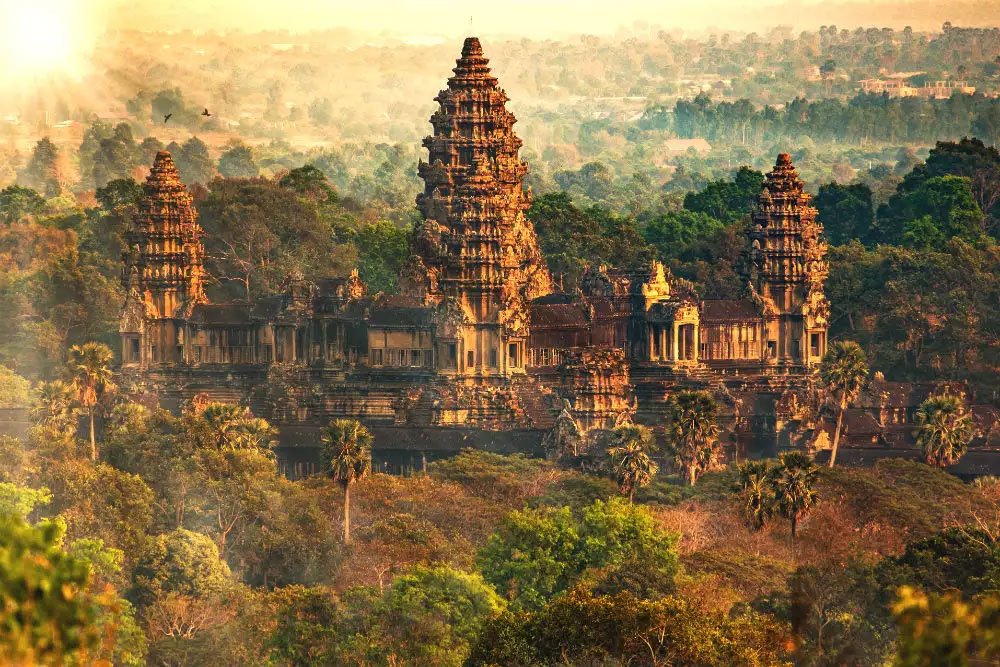
In Cambodia, the climate is tropical, and stays warm all year long. It is governed by the monsoon winds, so that this country has two main seasons in a year.
May 28, 2025
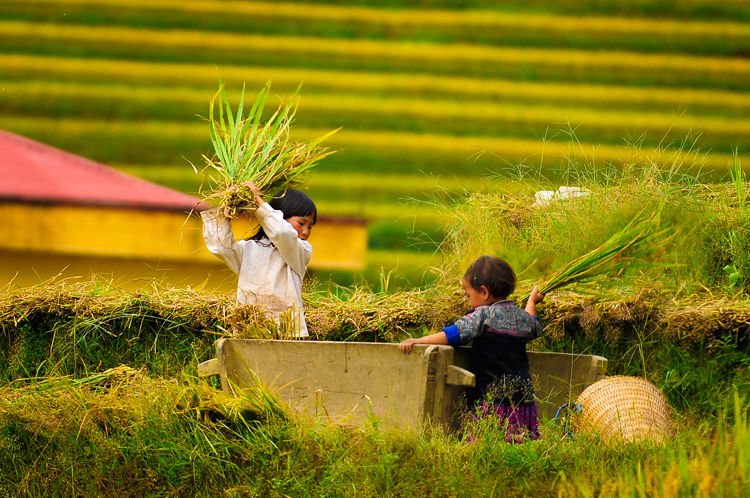
Mu Cang Chai is a highland district of Yen Bai province, about 280km from Hanoi. Each season, this place receives thousand domestic and international tourists. The district lies at the foot of the Hoang Lien Mountains, at an altitude of 1,000 m above sea level. To reach Mu Cang Chai district, go through Khau Pha pass - one of the four Great Passes of the Northwest.
May 28, 2025

People said that “If one has not visited floating market, he has not visited the south-west of Vietnam”. Literally, floating markets which have been around for a long time make the liveliest part of life in the south-west, the land of rivers, canals and ditches.
May 28, 2025

If you are in Vietnam on September 2, you will feel the extraordinary daily life of Vietnamese people. So what activities are recommended on this day?
May 28, 2025

Pottery class Bat Trang is one of activity with unique experience which help people to reduce stress and improve the creativity.
May 28, 2025
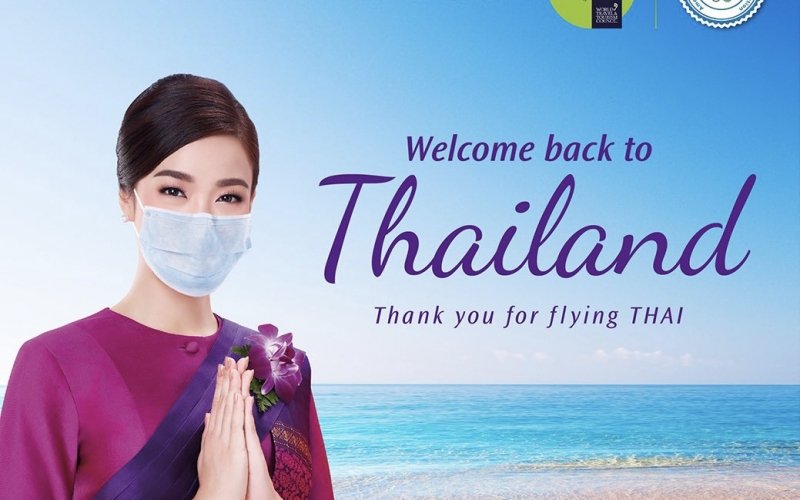
Prime Minister Prayut Chan-o-cha says Thailand will open the country to visitors from 46 countries instead of only 10 Covid-19 low-ríkyy countries announced earlier, starting from Nov 1.
May 28, 2025